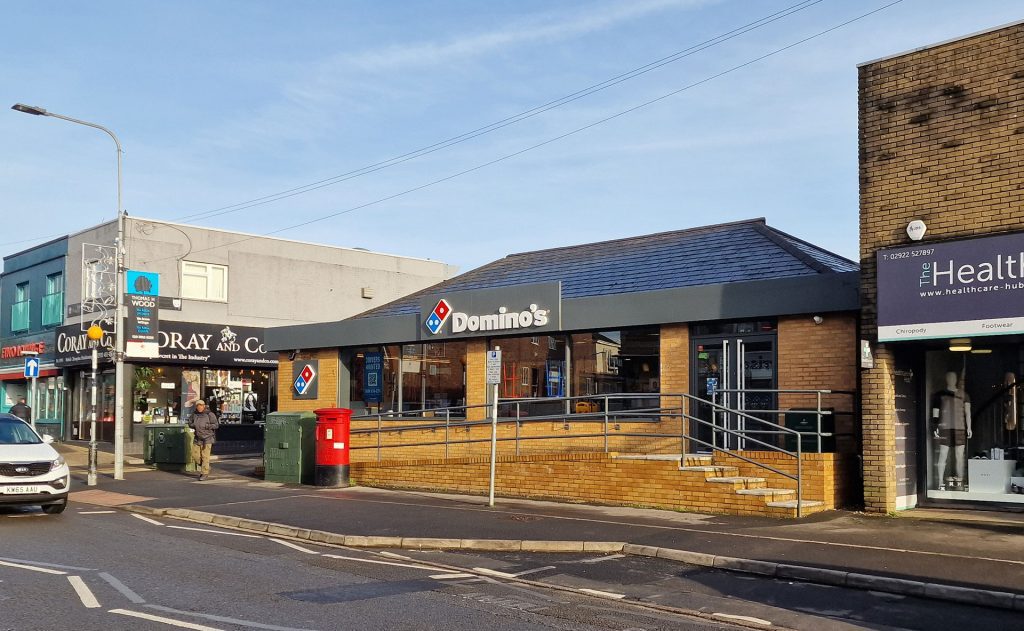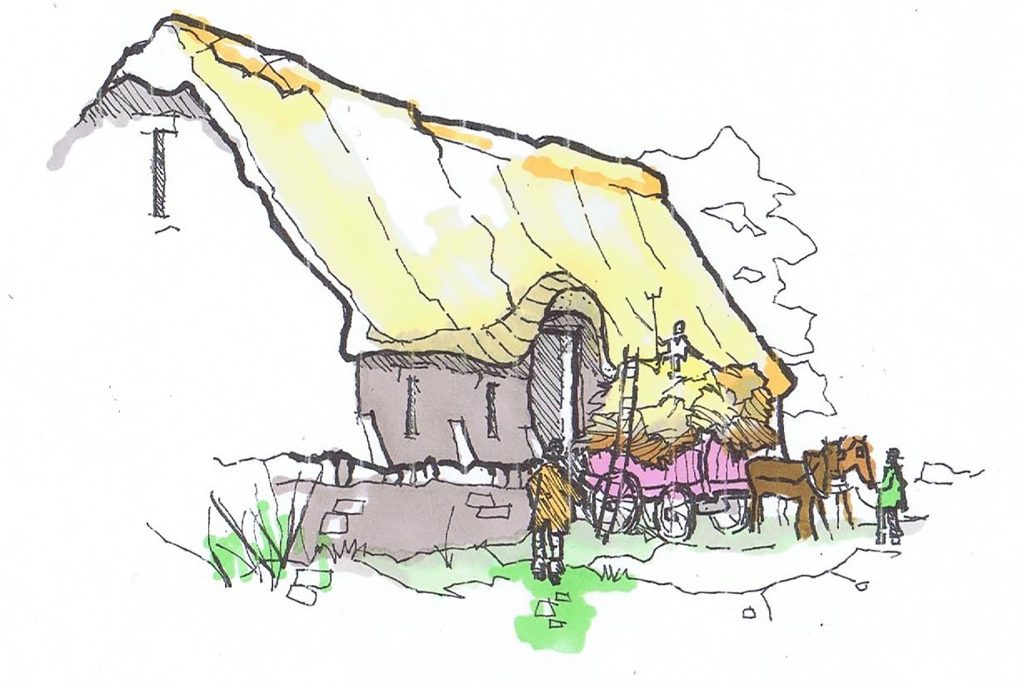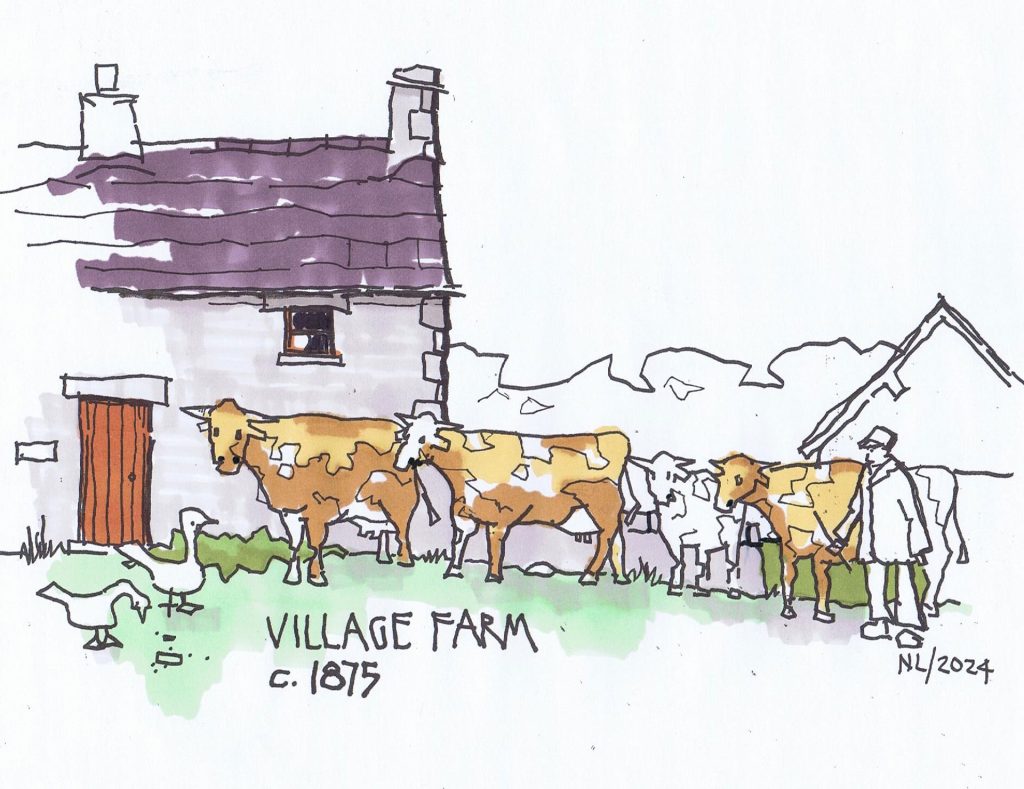Village Farm
Merthyr Road, in the heart of Whitchurch, is now a bustling high street. But it wasn’t always like that. Nigel Lewis explains why
t’s hard to believe that Domino’s Pizza, in the middle of the village, was once an old farmhouse. Not only that, but the farm was probably one of the largest in the parish.
Domino’s Pizza is quite recent, but before that it was the village Post Office (and travel agent). The flat-roofed building was probably built in the 1960s, along with the short parade of shops adjacent. All of this was once the site of a farmhouse and yard called Village (or Pentre) Farm.

How old was the farm? This is almost impossible to tell, but it probably dated from the 1700s. The landowner in the 19th century was Lord Dynevor, an absentee landlord who had extensive estates in north Cardiff, the Vale of Glamorgan, and in west Wales. Sadly, we don’t know anything about the earliest farmers.
The first proper map of the village (the OS map of 1880) shows the farmhouse set back from the old Merthyr Road, with a rickyard and all sorts of barns and outbuildings behind. There was also a garden to the side. The Whitchurch Brook flowed behind the farmyard and a tiny bridge provided access into the fields beyond.
The Tithe Map of 1840 (forty years earlier), shows the farmhouse and yard, in splendid isolation. There was a substantial building opposite, which might have been stables or a barn (this is where the new Morrisons shop is now).
The farmer back then was Edward Williams, who was 53 years old, and was living in the farmhouse with his wife Cecile. There were no children, but they had four live-in servants, most likely consisting of a house servant, a dairymaid, and a couple of male farmworkers.
Village Farm then was 112 acres in extent, with around 20 fields. This was quite big for Whitchurch and had four fields over the stream (where the Lower School of Whitchurch High School now is), another 12 fields west of the Merthyr Road, and a further four west of the (then) newly-constructed Taff Vale Railway. According to the Tithe Map, it was a mixed farm comprising dairy, pasture and arable.
The farm included the Little Mill (Felin Fach), whose tenant was Elizabeth Harding, a 38-year-old widow and miller. Adjacent was the large field that would later become the Polo Field.
Farming back in those days must have been backbreaking; horse-power and rudimentary mechanisation, and nearly all of the daily farm tasks were incredibly labour-intensive. Ernie Broad, writing about village life eighty years later, describes the cows from Village Farm returning from their pasture to be milked, just wandering across the Merthyr Road. The sketch on the previous page gives a flavour. It must have been quiet in Ernie’s time, and incredibly rural for Edward Williams. Imagine if there were cows trying to manoeuvre through the cars, buses, and lorries of the village today! Edward lived at the farm until his death in 1859.

The next farmer was Barry Wride, whose family had farmed the Graig Farm for generations. Barry took over Village Farm about 1860 when he was 48-years-old with his wife Mary and their five children. To help, they had a house servant and a live-in male worker/carter. I suspect that all of the farm labourers he needed would be living in some of the newly-constructed cottages nearby.
In July 1866, the Cardiff Times reported on a raid of duck-stealing at the farm, when five fat ducks were walked away. ’Mr B Wride has from time-to-time lost ducks, geese and fowls worth a great many pounds.’ Frustratingly, the perpetrators were never apprehended.
Then, in May 1878, the Cardiff Times reported on a fire in the rickyard: ‘were it not for the promptitude of the neighbours in the village, Mr Barry Wride would undoubtedly have had the whole of the premises consumed.’ It seems that a ‘thrashing machine’ was working there at the time and a spark from it caused the fire.
There were three generations of ‘Wrides’, all named Barry, so it is quite confusing. The family looked after the farm for the next 30 years.
The farm was up for sale in 1887, and it seems that a retired clergyman, Rev RT Howell took on the challenge. Sadly, he died in April 1889, and the farm went on the market again.
Tom Samuels then acquired Village Farm. In April 1896, Tom put himself forward for one of the 23 seats on the newly established Parish Council, and he was elected with 146 votes.
The story of Village Farm in the early decades of the 1900s are wonderfully told by Ernie Broad in his ‘chronicles’ of the village. I paraphrase (with apologies):
‘A row of terraced houses was built directly opposite the farm, and Tom acquired the corner house. He converted it into a shop for his son George, who didn’t want to work on the family farm, so became a shopkeeper instead.
‘Tom also built the tall building next door in new Bishops Road. This is still there, with the chemist shop now under. This tall building housed a slicing and cutting machine for mangolds (whatever they were!). The sacks of mangolds were hoisted vertically to an access door, to be fed into the machine. The sliced and cut mangolds were then collected in sacks and delivered to local farmers as feed for their stock.’
Over the coming years, many of the farm’s fields were sold off for housing, but Tom continued with his remaining fields; he was still there in 1920. His widow was still in the farmhouse in 1937, but by now surrounded by lots of shops.
I wonder what happened after?
Nigel Lewis is a member of AWEN@thelibrary (awen.cymru@gmail.com)

